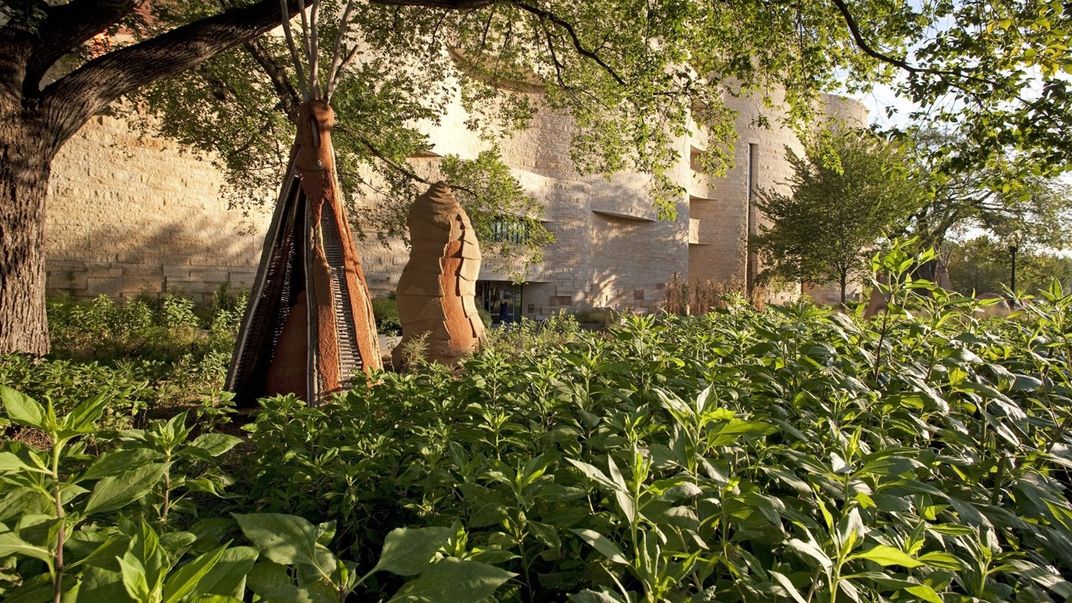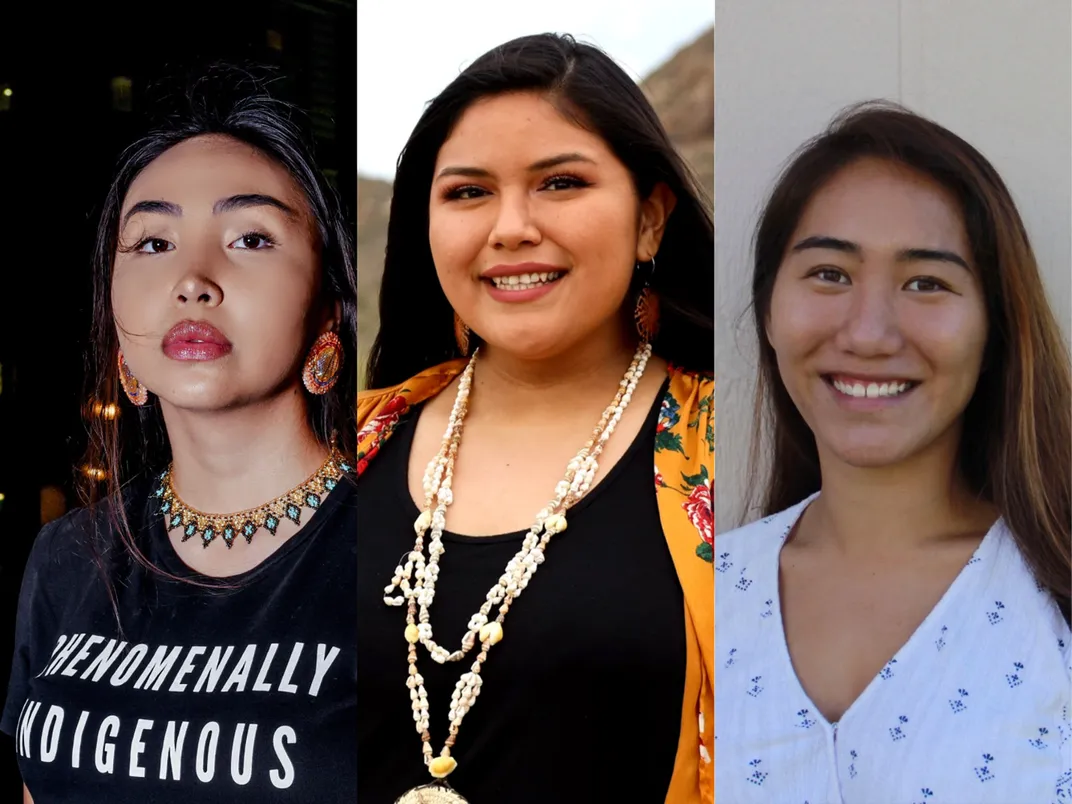NATIONAL MUSEUM OF THE AMERICAN INDIAN
Five Ideas for Celebrating Indigenous Peoples’ Day 2022
From reading Indigenous authors to exploring Native plants, these activities suit everyone in the family
/https://tf-cmsv2-smithsonianmag-media.s3.amazonaws.com/filer_public/e1/25/e125e727-1260-41fa-a418-093807b870e0/5_suggestions_youth_in_action.png)
Are you a parent, grandparent, or other caregiver looking for an age-appropriate event to enjoy on Indigenous Peoples’ Day, an annual event meant to honor the Indigenous people of the United States? This celebration occurs on the second Monday of October and this year will take place on October 10. To date, 14 states—Alabama, Alaska, Hawai'i, Idaho, Maine, Michigan, Minnesota, New Mexico, North Carolina, Oklahoma, Oregon, South Dakota, Vermont, and Wisconsin—and the District of Columbia, more than 130 cities, and growing numbers of school districts celebrate Indigenous Peoples’ Day in place of or in addition to Columbus Day.
In Canada, National Indigenous Peoples’ Day is celebrated on June 21, the summer solstice and a day with spiritual significance for many Indigenous communities. It is an opportunity for everyone to celebrate the cultural richness and contributions of Indigenous people and to acknowledge that Indigenous history began long before Columbus “sailed the ocean blue.”
As the mornings cool and the leaves begin to change with the approach of autumn, here are five suggestions for everyone in the family to engage with the spirit of Indigenous Peoples’ Day this year. And be sure to revisit our article from 2020 with still more ideas that continue to resonate on this important holiday.
Acknowledge the Indigenous lands you are on.
A practice at the National Museum of the American Indian we recommend is to acknowledge the lands you live on and name the Indigenous people originally from there. The museum can help with things to consider when thinking about Land Acknowledgments. Check if your hometown is shown on this map of places that recognize Indigenous Peoples’ Day. If your town or school district isn’t listed but has adopted Indigenous Peoples’ Day, email [email protected] to put your community on the map as part of this growing movement.

Paddle the waters; walk the land.
Check out the Guide to Indigenous DC, a tour map and mobile application featuring 17 sites of importance that emphasize Indigenous peoples’ contributions to Washington, D.C. The guide was created by Dr. Elizabeth Rule (Chickasaw) to help her Native students feel that D.C. was their place, a welcoming place, and now it’s a teaching tool for us all. I recommend pedaling away on a rental bike or coasting on a scooter and bringing along a picnic!
When the weather is crisp and the sky azure, explore the four distinct habitats of the National Museum of the American Indian (upland hardwood forest, meadow, cropland, and wetland) featuring plants and trees native to the region. Northern and southern species overlap in the Washington region and so do trees native to the Piedmont and coastal plain. It’s cool enough to grow northern trees such as the oak and the maple, but warm enough to support the southern magnolia (Magnolia grandiflora), which is quite common in the D.C. area. See the bald cypress, located in the museum’s wetland habitat. The cypress was used for building boats in the region, for thousands of years.
Speaking of water highways, another must-see for families, possibly by canoe, is Analostan/Theodore Roosevelt Island, located in the Potomac River between D.C. and Virginia. Potomac means “place where goods are gathered” in the Algonquian language spoken by the original peoples of this land, the Nacotchtank (also known as the Anacostan), and it was a place of great trade! The Anacostia River, too, is well worth a visit. Once called the “forgotten river,” natural life, birds, and native plants and fish are on the rebound due to many conservation efforts and advocacy by the Anacostia Watershed Society, to name just one of my favorite local environmental groups! Consider connecting to these places with their rich history and leaving the landscape better for the next generation. Learn more about the local tribes to the region here.
Plant Native! Native plants support healthy ecosystems. For example, they sustain insects, cornerstones of a healthy environment. Insects in turn provide needed energy to birds and help fuel their migration in the fall. Most people know about the relationship between milkweed and monarch butterflies. But consider the pawpaw, a tree native to the eastern United States and Canada and common east of the Mississippi. (My tribe, the Shawnee, call the time of Fall, September when the pawpaw fruits ripen the “pawpaw moon.”) Outside the Deep South, the pawpaw is the only host species for caterpillars of the zebra swallowtail butterfly. Think of the impact you can have by planting native species and creating a healthy ecosystem in your very own yard and neighborhood. The National Park Service has all sorts of resources about gardening with native species and about an exciting way you can get involved through the HOMEGROWN NATIONAL PARK Program.
Check out Indigenous books and entertainment. Consider reading a board book with the youngest members of your family. Social Justice Books, a project of Teaching for Change, shares a list of books recommended by Dr. Debbie Reese (Nambé Pueblo), founder and co-editor of American Indians in Children’s Literature. Dr. Reese’s list includes everything from illustrated storybooks for young children, to middle-school fiction and nonfiction, to titles for young (or not so young) adult readers. Three of my favorite podcasts are Warrior Kids by Pam Palmater, This Land by Rebecca Nagle and All My Relations by Matika Wilbur (Swinomish/Tulalip) and Adrienne Keene (Cherokee Nation), while three excellent television shows include Molly of Denali on PBS for the littlest learners, Rutherford Falls (hilarious!), and Reservation Dogs (appropriate for older teens due to language with some deep messages they can handle).

Moon, Sun, and Stargaze. Looking directly at the sun isn’t safe unless you’re visiting the exhibition Preston Singletary: Raven and the Box of Daylight at the National Museum of the American Indian in D.C. Families can listen to this Sidedoor podcast before or after the exhibition. Consider stargazing at night and learn about the sun, moon, or stars from a Native perspective. For example, most of our tribes have star stories. Some of these are only told at certain times of the year but just looking at the North Star and seeing how the Big Dipper moves around the North Star during the seasons is important. For centuries the movement of the stars has provided Native communities with a signal for when traditional activities (such as hunting, fishing, and gathering) should occur. These practices recognize that there is a season for everything and that harvesting at the right time and in a respectful way ensures balance and reciprocity. Here is a bilingual (English-Spanish) website from the National Museum of the American Indian, Welcome to Living Maya Time | Living Maya Time, to learn about the relationship between the sun, corn, and the calendar. The Mayans have always had extraordinary knowledge of the cosmos. Consider, too, learning about the archeoastronomy of tribes here in the United States or of the Inka and their temple of the sun in Peru. For children under 10, use this free activity guide.
Learn more by visiting Native Knowledge 360°, and advocate for Indigenous Peoples’ Day. Native Knowledge 360°, the museum’s National Education Initiative, is working to transform teaching and learning about American Indians. Attend the museum’s free online Indigenous Peoples’ Day Teach-In on October 1, filled with expert contemporary Native thought leaders and current issues around sovereignty and social justice. Or, the Youth in Action online program about transformative teaching on October 10. The program will be hosted by three Indigenous youth who are incorporating Indigenous voices in K–12 education and promoting inclusive conversations in our nation’s classrooms.

